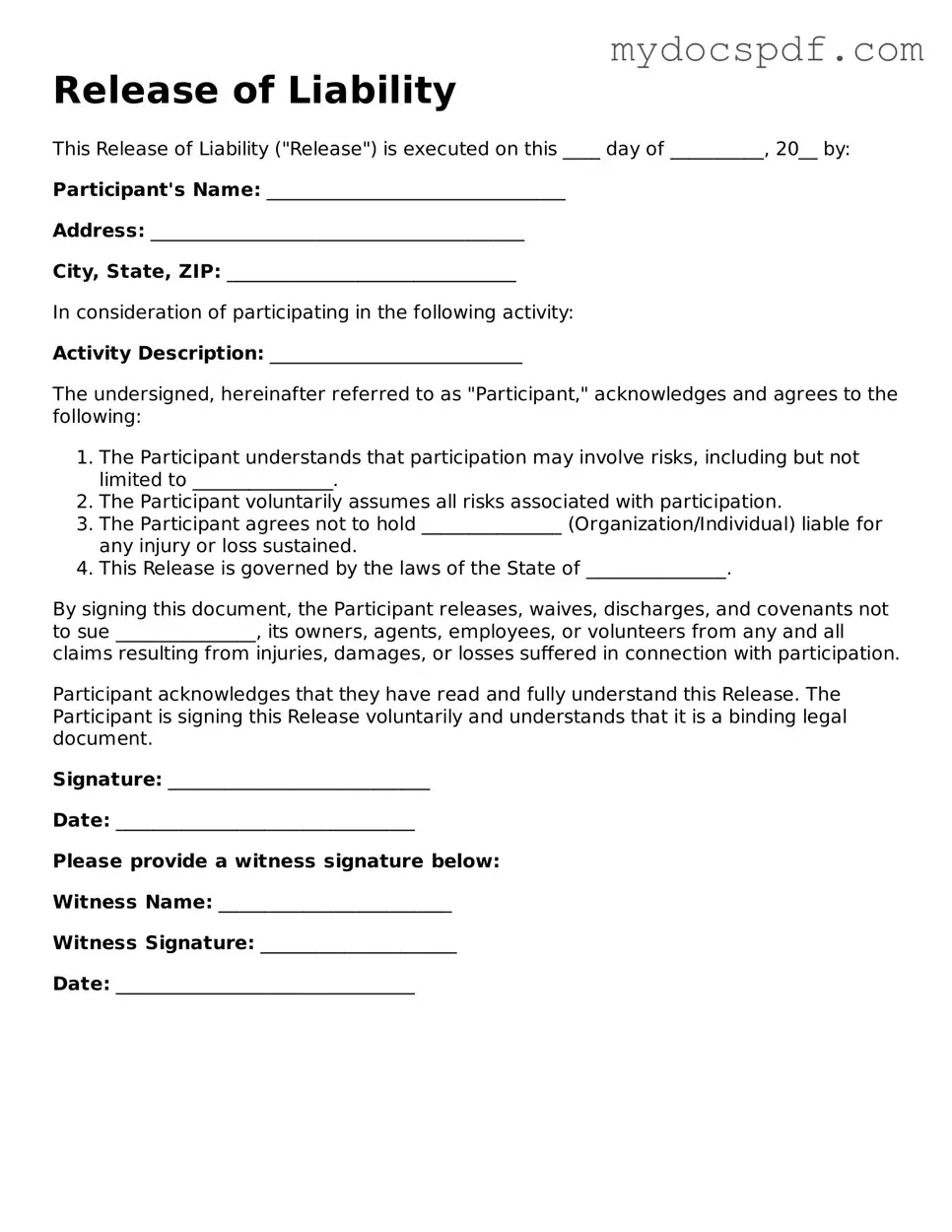Release of Liability
This Release of Liability ("Release") is executed on this ____ day of __________, 20__ by:
Participant's Name: ________________________________
Address: ________________________________________
City, State, ZIP: _______________________________
In consideration of participating in the following activity:
Activity Description: ___________________________
The undersigned, hereinafter referred to as "Participant," acknowledges and agrees to the following:
- The Participant understands that participation may involve risks, including but not limited to _______________.
- The Participant voluntarily assumes all risks associated with participation.
- The Participant agrees not to hold _______________ (Organization/Individual) liable for any injury or loss sustained.
- This Release is governed by the laws of the State of _______________.
By signing this document, the Participant releases, waives, discharges, and covenants not to sue _______________, its owners, agents, employees, or volunteers from any and all claims resulting from injuries, damages, or losses suffered in connection with participation.
Participant acknowledges that they have read and fully understand this Release. The Participant is signing this Release voluntarily and understands that it is a binding legal document.
Signature: ____________________________
Date: ________________________________
Please provide a witness signature below:
Witness Name: _________________________
Witness Signature: _____________________
Date: ________________________________
